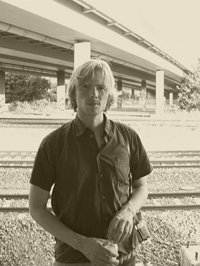Designing Constraints

We worked with Thor developing the iLogData and M-Log, He included the iLog in his Essay DesigningConstraints.
http://www.ixi-software.net/thor/DesigningConstraints.pdf "" Currently, a musician working with digital technology is faced with a panoply of musical tools that can be roughly characterized by a split between ready-made music production software on the one hand, and audio-programming environments such as SuperCollider, CSound, Pure Data, Max/MSP, ChucK, or Audiomulch (to name but a few) on the other. Problems with the former lie in the conceptual and compositional constraints imposed upon users by software tools that clearly define the scope of available musical expressions. It is for this reason that many musicians, determined to fight the fossilization of music into stylistic boxes, often choose to work with programming environments that allow for more extensive experimentation. However, problems here include the practically infinite expressive scope of the environment, sometimes resulting in a creative paralysis or in the frequent symptom of a musician-turned-engineer. Consequently, a common strategy can be detected, defined here as that of designing constraints, where the instrument designer, the composer, or the performer (a distinction often irrelevant in these systems; see Drummond 2009) devises a relatively high-level system of constraints, encapsulating a defined space for potential expression, whether of compositional or gestural nature "" From Essay http://www.ixi-software.net/thor/DesigningConstraints.pdf
Thor works in the Department of Informatics at the University of Sussex and member of the Creative Systems Lab.
"My PhD in Computer Science and Artificial Intelligence - with the title "Epistemic Tools: The Phenomenology of Digital Musical Instruments" - focused on the conceputal design and human-machine interaction issues in musical software. My interests have been focussed on creating high level control interfaces which contain lower level automation of sound and musical parametres. I like to see the interface as an instrument, creating graphical applications or programming languages that control musical structures. The phenomenology of musical instruments is of particular interest, and the techno-philosophical implications that are implied in the desire to create musical machines and epistemic tools. Machine learning is part of this project as the aim is to make instruments that learn facts about the musician."
Website: ixi audio



